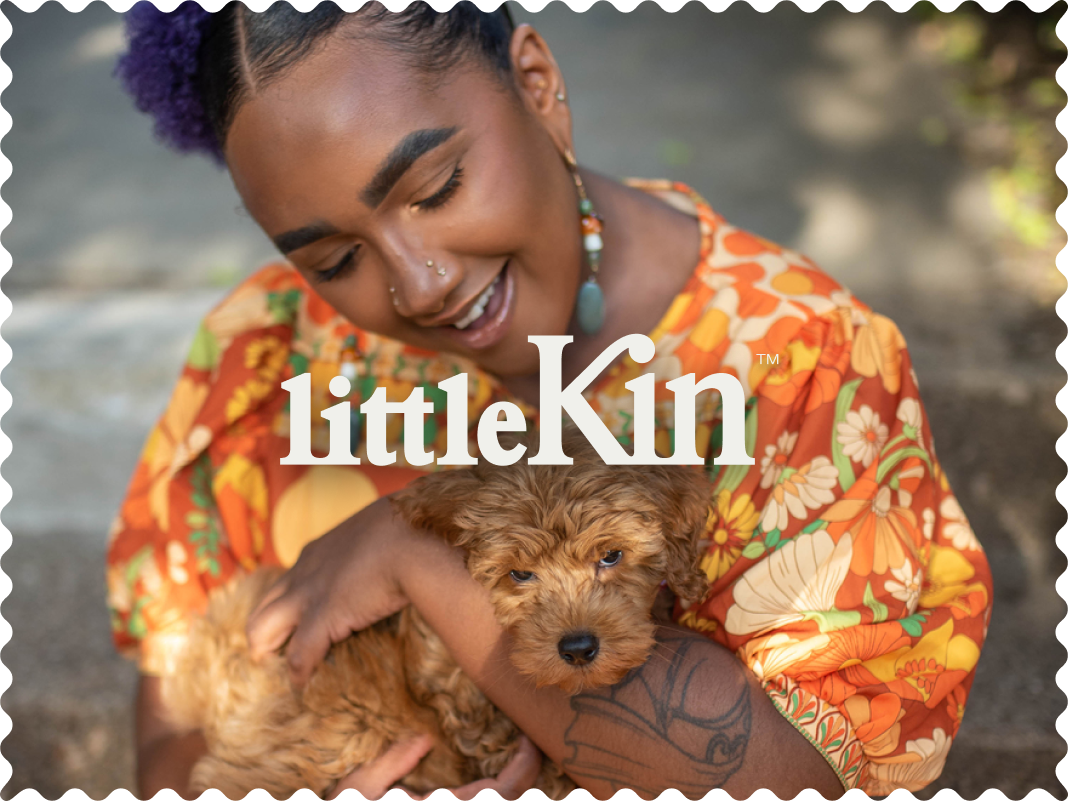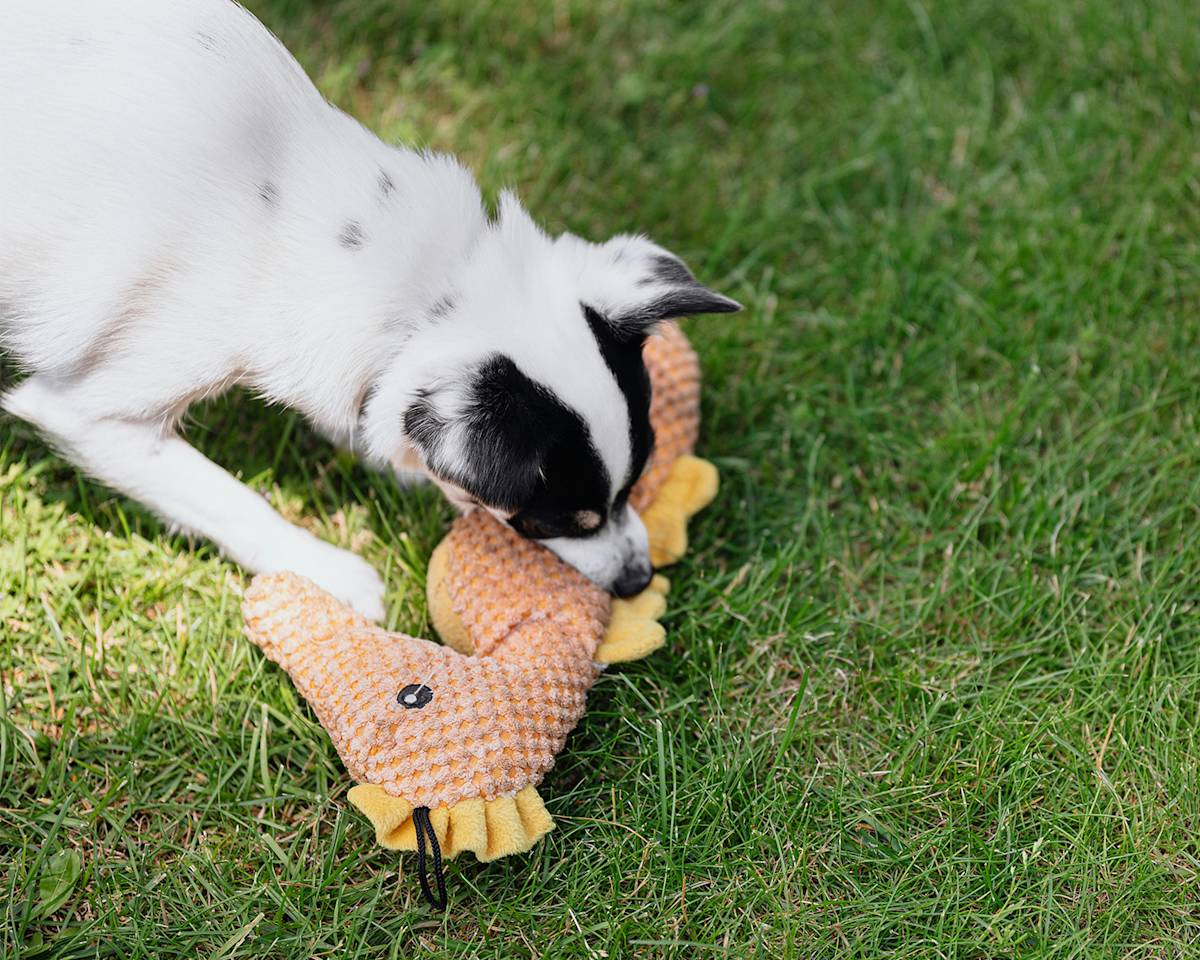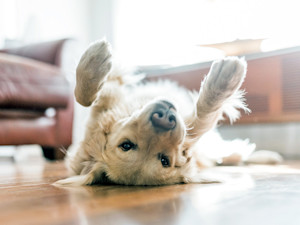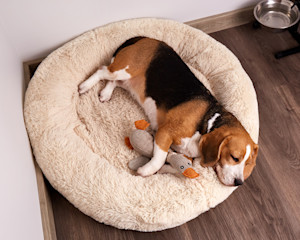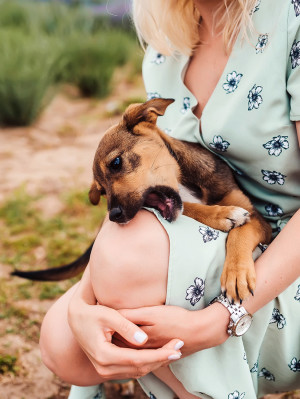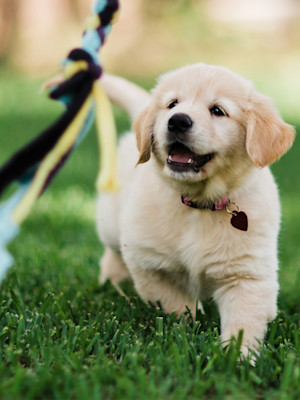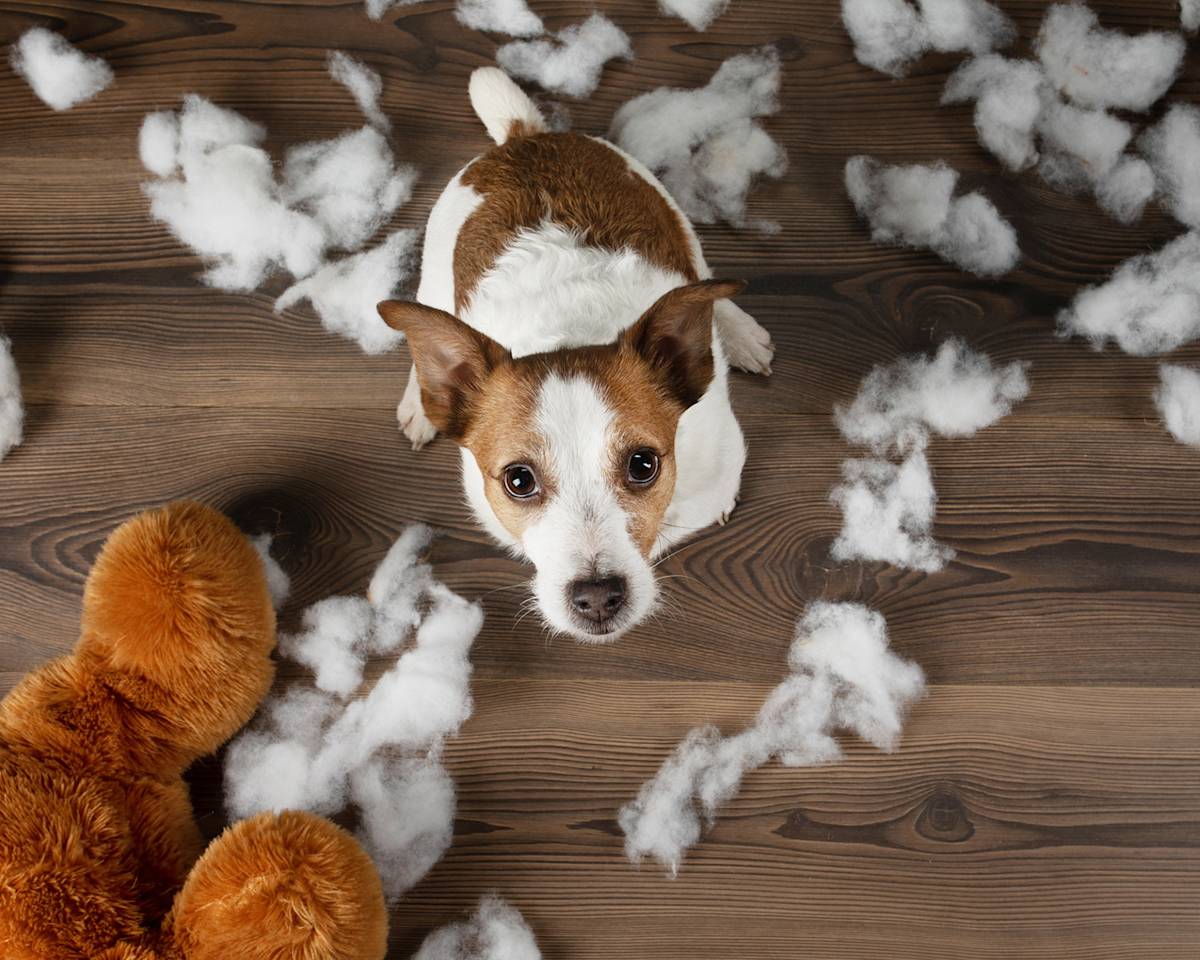
Share Article
We’ve all been there: you treat your dog to a shiny new toy, only to watch it reduced to stuffing and scraps before the day is out. It feels wasteful, messy – and a little maddening. Yet here’s the surprising part – that urge to rip and shred isn’t always a ‘problem behaviour’ at all. In fact, it can be a completely natural – even healthy – outlet for your dog’s instincts. It sounds upside down, but the destruction might actually be doing them good.
The science behind shredding
According to this popular reelopens in new tab by certified dog trainer duo Emily and Logan (also known as Confident Mutts), shredding a toy is great for mental and physical stimulation. In fact, it’s a completely normal behaviour that satisfies instincts for many dogs. But be mindful if your dog starts eating the toy – more on that later.
“Shredding is one of the purest forms of enrichment you can offer,” says Kim Grundy, certified clinical animal behaviourist at Pooches Galoreopens in new tab.
How much do you spend on your pet per year?
“Many dogs engage in shredding because it mimics natural predatory sequences: grab, shake, tear and dissect. It’s their way of expressing instincts that are deeply rooted in hunting and problem-solving,” adds Kim.
“Dogs also chew to tighten up their jaws, clean their teeth and explore textures with their mouths,” explains Iryna Smyrnova, a veterinarian at Meowoffopens in new tab.
“For others, especially younger or high-energy breeds, toy destruction is a way of expending excess energy and stimulating themselves mentally,” says Iryna.
Since many dogs don’t engage in natural hunting behaviours, they often express themselves through toy shredding. Boredom may certainly play a factor, but even dogs whose needs are met, can engage in shredding.
Benefits of controlled shredding for dogs
“When done safely, shredding keeps dogs mentally sharp, emotionally balanced and deeply satisfied,” says Kim.
It’s a common myth that dogs that shred toys are aggressive, stressed or frustrated. In reality, they are having fun and engaging in this typical behaviour. “It’s not about anger, it’s about exploration and satisfaction,” says Kim.
Shredding is actually a common stress relief exercise for dogs, as it provides an outlet for them to engage more than one sense, and challenges them to solve problems. Completing the ‘hunt’ also provides a sense of satisfaction for your dog.
“Shredding is often just the way dogs play with a toy in a fun, instinctual way, and not a sign of any underlying behavioural problem. Providing lots of toys and safe playtime positively meets these instincts,” says Iryna.
“When a dog tears apart a toy, they are also practising skills like paw-eye coordination, bite control and object control. Shredding also creates a sense of achievement, releases endorphins and fulfils their built-in curiosity. Intellectually, it exercises their minds,” she adds.
“Shredding can release dopamine and serotonin. This kind of play helps dogs decompress and reduces frustration. It’s a form of natural enrichment, similar to puzzle-solving,” says Kim.
However, if you see your dog chewing or eating household items, like electrical cords or furniture, it might be a sign they are under-stimulated. “Without a safe outlet for them to act upon their instincts, their energy and innate drives have nowhere to go and influence their mental as well as physical well-being. In some canines, it could even result in stress-related physical illness in the long run,” says Iryna.
Safe shredding
“The key is to set up shredding safely by providing toys designed to be destroyed. This will help dogs satisfy their instincts without harming themselves or your belongings,” says Kim.
You shouldn’t try to suppress toy shredding, as this can increase stress and frustration for your dog and manifest in unwanted ways, from destroying less appropriate items in the house to self-directed behaviours like licking or pacing.
“Shredding can typically be allowed and even encouraged, as long as the toys are safe and the room is supervised. The goal is to fill natural instincts without exposing your dog to undue harm, finding a compromise between play freedom and safety precautions,” says Iryna.
To make sure your pup stays safe, follow this advice.
Firstly, your dog should be closely supervised so you can determine the type of shredding they prefer and understand their pattern. “You must step in immediately if the dog is eating chunks of toys, if the toy is breaking up into harmful fragments, or if play turns destructive or dangerous,” says Iryna.
“A shredder will bite, tear and shred toys, but generally will not swallow large pieces. An eater will try to swallow pieces of the toy or go back and forth repeatedly on something it shouldn‘t eat,” explains Iryna. Knowing whether your dog is a shredder or an eater is important to keep them safe, and pick the appropriate toys for them.
If your dog likes to consume the toys they shred, try giving them a head of cabbage or cauliflower to shred instead, so they don’t injure themselves. You could also switch to edible chews or other enrichment options, as the biggest safety concern when it comes to shredding is the hazard of choking and swallowing non-food objects. “Fragile or small toys tend to break into fragments that a dog can swallow, which can lead to gastrointestinal obstruction or even life-threatening conditions,” says Iryna.
Practical shredding solutions
Experts recommend tough rubber toys, tough nylon bones, rope toys or treat-dispensing puzzle toys for heavy chewers. For other dogs, stuffing toys with treats or even plain ice can render shredding a safe and rewarding experience.
Soft toys are generally safe for light shredders, as long as they don’t have features like plastic eyes, plastic noses or anything else that can be swallowed by your dog. Monitor your dog to prevent them from swallowing any stuffing.
If you aren’t keen on spending £15+ every time your dog shreds a toy, there are a few DIY enrichment ideas you can easily do at home:
a Kong stuffed with peanut butter or yoghurt
hiding treats within a folded towel
creating a ‘snuffle mat’, which dogs sniff to find dry food
cardboard boxes filled with edible, non-toxic treats
wrapping treats in paper or toilet roll tubes
treats in paper egg cartons
All these satisfy their desire to chew, tear and forage. Make sure to adjust the toy/activity based on your dog’s needs and confidence levels.
“Supervision during shredding means being nearby and attentive, but not necessarily watching constantly. Being ready to step in if pieces get too small or if your dog starts swallowing. Make it an interactive enrichment activity rather than passive destruction,” says Kim.
Setting up a designated ‘shredding time’ can be helpful, too. “Place your dog in a safe zone and allow them 10–20 minutes of focused shredding while being closely supervised,” says Iryna.
“Toy rotation is necessary to ensure ongoing interest and mental stimulation. It keeps play fresh and prevents your dog from becoming fixated on a single toy and losing interest in destroying it or solving problems,” adds Iryna.
“Dogs, like humans, lose interest in the same items over time. Bringing ‘old’ toys back after a week often reignites excitement and curiosity,” says Kim.

Fani Mari
Fani is a freelance journalist, copywriter and content creator from Greece and a former Londoner. She has written for various publications including Condé Nast Traveller, Allure, Glamour and Refinery29. When she’s not quizzing dermatologists on the next it-ingredient or filming makeup videos, you can find her binge-watching shows, making candles and taking long walks in nature. She lives in Athens, Greece with her boyfriend and their dog, Joey, who obviously doesn’t share food.
Related articles
![training dog chewing blanket]()
Why Does My Dog Chew On Blankets?
A (seemingly) unstoppable nibbling obsession with all the blankets
![Cute Golden Retriever rolling on the floor at home.]()
Why Is My Dog Obsessed With Rolling Around on the Floor?
It might look a bit wild, but they obviously don’t care
![dog lying in bed with duck toy]()
7 Ways to Help Your Anxious Dog Switch Off
Because pups need to switch off too
Are You Playing Too Much Fetch?
Why fetch might be hurting your dog more than helping
Why Does My Dog Nibble on Me?
Those little teeth are sweet, but they definitely don’t feel good on your hand
![Golden Retriever puppy chasing a toy]()
7 Easy Dog Toys to Make at Home
Flex your creative muscle and keep your pup happy
